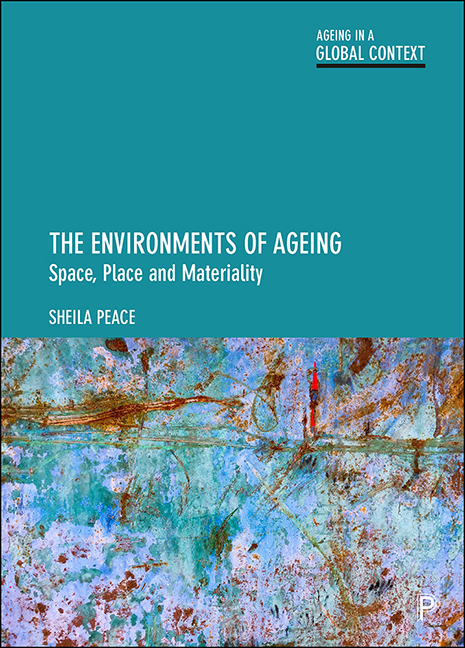Book contents
- Frontmatter
- Dedication
- Contents
- List of figures and tables
- Research summaries
- List of acronyms
- About the author
- Acknowledgements
- Series editors’ preface
- Preface: understanding the structure
- 1 Person and environment
- 2 Theoretical development
- 3 The global context
- 4 Environmental living
- 5 Housing in later life
- 6 Housing histories, housing options
- 7 Alternative environments: specialised housing (with care)
- 8 Care home living: a form of long-term care
- 9 Methodological development
- 10 Rethinking the spatiality of ageing
- Glossary of terms
- References
- Index
6 - Housing histories, housing options
Published online by Cambridge University Press: 15 September 2022
- Frontmatter
- Dedication
- Contents
- List of figures and tables
- Research summaries
- List of acronyms
- About the author
- Acknowledgements
- Series editors’ preface
- Preface: understanding the structure
- 1 Person and environment
- 2 Theoretical development
- 3 The global context
- 4 Environmental living
- 5 Housing in later life
- 6 Housing histories, housing options
- 7 Alternative environments: specialised housing (with care)
- 8 Care home living: a form of long-term care
- 9 Methodological development
- 10 Rethinking the spatiality of ageing
- Glossary of terms
- References
- Index
Summary
Introduction
When asked if they might move after retiring from paid employment, and whether this might be to special housing geared towards older people, many research respondents will say they haven't really thought about it and wish to stay in their own home for ‘as long as possible’. This is despite the fact that their stories show they have thought about it even if it has not been widely discussed, and some have been used to moving throughout their lives (Holland, 2001; Wiles, 2005b; Peace et al, 2006). Attachment to place involves the coming together of levels of environmental understanding, and it has been noted ‘that individual experience of place is layered and that knowledge of personal biography and experience in time and space leads to greater clarification of the complexity of person– environment interaction’ (Peace et al, 2011, p 754).
Here, vignettes from anonymised and real name participants who wished to be named in research are introduced and they have all given consent for their stories to be told. They have been drawn from three British research studies that consider the detail of environment and ageing. The concept of ‘option recognition’, which captures the extent of environmental impact on decision making in later life, is then introduced. Consideration is given to how this theoretical development relates to research within other developed countries, especially the ENABLE-AGE researchers who similarly take into account the normality of environmental continuity and change in very old age. To conclude, the lens of general housing is used to reflect on the meaning of home.
Staying put?
The first vignette for Teresa and Sidney comes from the Transitions in Kitchen Living study (2009– 11) (Peace et al, 2018), discussed in Research summary 9.1 as an example of interdisciplinary research methodology. Quotes from the original interview scripts have been anonymised. Focusing on the domestic kitchen in later life, housing histories were carried out with research respondents in order to understand individual experiences of micro-environments across the life course.
- Type
- Chapter
- Information
- The Environments of AgeingSpace, Place and Materiality, pp. 133 - 152Publisher: Bristol University PressPrint publication year: 2022

